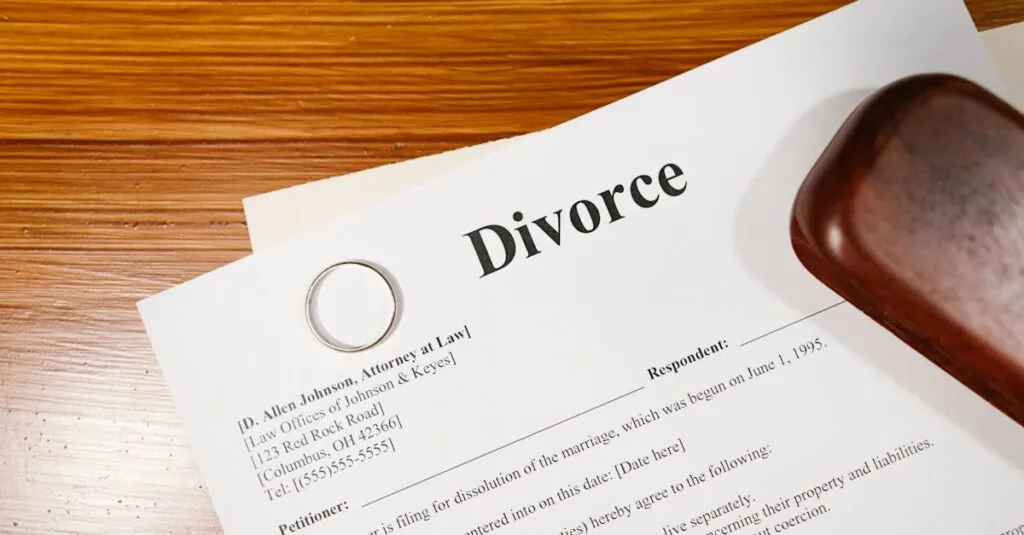Navigating the reconciliation process can feel like trying to untangle a pair of headphones—frustrating yet oddly satisfying once you figure it out. Whether it’s between individuals, communities, or nations, reconciliation is all about mending broken bonds and finding common ground. It’s the art of turning past grievances into future friendships, and let’s face it, who doesn’t want to be the hero of their own redemption story?
In a world where misunderstandings can escalate faster than a cat meme going viral, mastering the reconciliation process is essential. It’s not just about saying sorry; it’s about fostering understanding and building trust. So grab your metaphorical toolkit, because this journey promises to be enlightening, and perhaps a little entertaining, as we explore the steps to transform conflict into collaboration.
Table of Contents
ToggleOverview of Reconciliation Process
Reconciliation involves restoring relationships damaged by conflict or misunderstanding. This multi-step process includes acknowledging grievances, facilitating open dialogues, and working towards mutual understanding.
First, parties must recognize past wrongs to move forward. Acknowledgment creates a foundation for rebuilding trust. Next, effective communication allows individuals to express feelings and perspectives. Dialogue fosters empathy, encouraging deeper connections.
Third, crafting a shared vision for the future is essential. Setting collective goals offers a pathway to collaboration. Additionally, involvement of neutral facilitators, such as mediators, enhances the process. These professionals provide guidance and help navigate emotional dynamics.
Challenges often arise during reconciliation. Resistance may stem from unresolved grievances, fear of vulnerability, or distrust. Addressing these challenges head-on can ease tensions.
Commitment to the process is crucial. Engaging in reconciliation usually leads to not only improved relationships but also personal growth. Lasting change often emerges when individuals actively participate in fostering understanding. Results from successful reconciliations can transform hostility into friendship and collaboration, benefiting individuals and communities alike.
The effectiveness of reconciliation relies on genuine intent, perseverance, and a willingness to learn from the past. Through these steps, parties can mend relationships and create stronger bonds moving forward.
Importance of Reconciliation Process
Reconciliation holds immense value for both individuals and organizations. It fosters healing and builds bridges, enhancing relationships in various contexts.
Benefits for Individuals
Individuals experience significant personal growth through reconciliation. Restoring relationships often alleviates emotional burdens, promoting a sense of relief and closure. Understanding grievances fosters empathy, facilitating deeper connections. Communicating openly allows individuals to express their feelings, leading to stronger bonds. Engaging in reconciliation enhances self-awareness and emotional intelligence, skills that benefit future interactions. Ultimately, the process cultivates resilience, setting the stage for healthier relationships moving forward.
Benefits for Organizations
Organizations thrive when reconciliation occurs. Improved teamwork and collaboration result from addressing past conflicts. Open dialogue creates a culture of trust, enabling employees to express their thoughts without fear. Fostering understanding enhances morale, leading to increased productivity. Organizations that embrace reconciliation often see reduced turnover rates, as employees feel valued. The process encourages innovation, as diverse perspectives contribute to creative problem-solving. Commitment to reconciliation strengthens the overall organizational culture, driving success and sustainability.
Key Steps in the Reconciliation Process
The reconciliation process consists of several crucial steps that guide participants toward understanding and resolution. Each phase plays a pivotal role in addressing past grievances and rebuilding trust.
Identification of Differences
Identification of differences involves recognizing and acknowledging specific grievances. Participants articulate their concerns and experiences, enabling a clearer understanding of the underlying issues. This step creates a foundation for open dialogue. Each party’s perspective is essential for fostering empathy and appreciation for differing viewpoints. Active listening and respectful communication enhance this identification phase. Engaging in discussions that highlight these distinctions paves the way for mutual understanding and sets the stage for the subsequent steps in reconciliation.
Analysis and Resolution
Analysis and resolution follow the identification of differences, focusing on understanding root causes and finding solutions. Participants reflect on the identified grievances, exploring their implications and underlying factors. This analysis often requires uncomfortable conversations, but confronting these issues promotes deeper connections. Resolution entails collaboratively developing actionable strategies that address concerns. Negotiating solutions fosters a sense of shared ownership, encouraging commitment among all parties. Facilitators may enhance this process by guiding discussions, ensuring that resolutions are practical and sustainable.
Challenges in the Reconciliation Process
Reconciliation often encounters several challenges that can hinder progress. Addressing these obstacles is essential for effective outcomes.
Common Obstacles
Unresolved grievances frequently derail reconciliation efforts. Participants may hold onto past wrongs, making it difficult to move forward. Fear of vulnerability surfaces when individuals hesitate to express true feelings. Distrust can loom large, as prior conflicts create a barrier to open communication. Additionally, differing perspectives complicate dialogue, leading to misunderstandings. These factors combined can create a tense environment, stifling the possibility of genuine reconciliation.
Strategies to Overcome Challenges
Engagement in active listening promotes a deeper understanding of each participant’s viewpoint. Creating a safe space encourages openness where individuals can express feelings without judgment. Establishing common ground can build rapport and foster a more collaborative atmosphere. Utilizing neutral facilitators like mediators often helps navigate difficult conversations. They provide impartial insights and guide participants through complex emotions. Developing a shared vision for the future sets a positive tone. Setting specific goals collectively keeps the focus on collaboration, turning challenges into opportunities for connection.
Best Practices for Effective Reconciliation
Establishing trust forms the foundation of effective reconciliation. Prioritize creating an environment where all parties feel safe to express their thoughts openly. This sense of safety encourages vulnerability and honesty, helping to break down barriers.
Active listening plays a crucial role in this process. Engage fully in conversations by focusing on the speaker, acknowledging their feelings, and paraphrasing their words. Nonverbal cues can also reinforce understanding, demonstrating genuine interest.
Facilitating open dialogues enhances communication. Scheduled discussions provide opportunities for participants to share grievances collaboratively. Consider using neutral facilitators who can guide discussions constructively, ensuring that all voices are heard.
Establish common goals to foster collaboration. Participants should identify shared interests that contribute to rebuilding relationships. This collaborative effort helps shift the focus from past grievances to future possibilities.
Address underlying issues directly. Encouraging participants to explore root causes leads to deeper understanding and fosters empathy. When individuals understand the motivations behind each other’s actions, they can work more effectively towards resolution.
Documenting discussions can prove beneficial. Keeping written records of agreements and sentiments provides a point of reference, which can eliminate confusion and miscommunication later. Regularly reviewing these documents promotes accountability among participants.
Encouraging patience is essential throughout the reconciliation journey. Building trust and understanding takes time, and participants may experience setbacks. Recognizing that progress can be non-linear allows individuals to stay committed to the process.
Learning from past experiences strengthens future interactions. Each reconciliation effort offers valuable lessons. By reflecting on what has transpired, individuals can develop strategies to improve their approaches in subsequent discussions.
The reconciliation process serves as a powerful tool for healing and growth. By embracing the steps outlined, individuals and communities can navigate the complexities of past grievances and foster meaningful connections. This journey requires patience and a commitment to understanding one another.
Overcoming challenges is crucial to achieving genuine reconciliation. When participants actively listen and create safe spaces for dialogue, they pave the way for empathy and collaboration. The transformation from hostility to friendship is not just beneficial for those involved; it enriches the broader community.
Ultimately, the reconciliation process is about more than resolving conflicts. It’s about building a culture of trust and cooperation that can lead to lasting positive change. With dedication and the right strategies, reconciliation can turn past wounds into a foundation for a brighter future.





